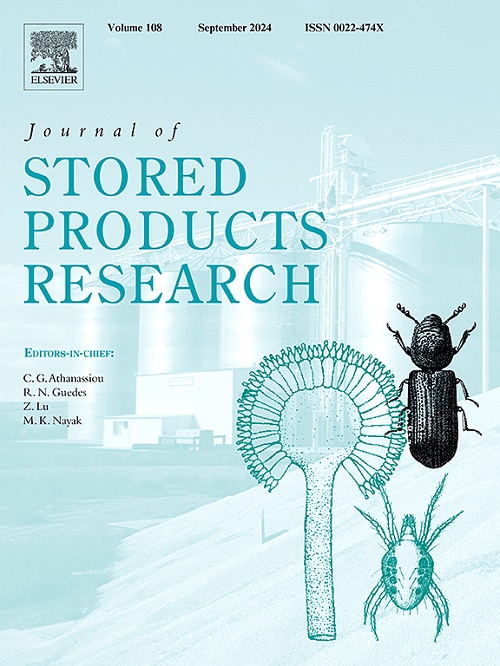Baking of 3D printed purple sweet potato and pumpkin powder mixture: Effects of 3D printing filament diameter and baking method on water transfer and Young's modulus during baking
IF 2.7
2区 农林科学
Q1 ENTOMOLOGY
引用次数: 0
Abstract
Water variation in post-processed 3D-printed foods with different 3D printing filament diameters (3D-PFD) critically affects their final quality. In this research, a purple sweet potato and pumpkin powder mixture (PPM) were utilized as the 3D printing ink and printed under different 3D-PFD. The printed samples then underwent oven and microwave baking. A temperature-dependent diffusion model and a Young's modulus model were applied to analyze water transfer during baking. The results inferred that the effective water diffusivity (Deff) increased with the increment of the previous 3D-PFD and baking temperature. The Deff during baking demonstrated distinct ranges across the 3D-PFD. For example, when the samples were printed under the 3D-PFD values of 1.2 mm and 0.8 mm, the Deff values in the subsequent oven baking ranged from 2.20 × 10−9-2.25 × 10−9 m2 s−1 and 4.78 × 10−9 -4.87 × 10−9 m2 s−1, respectively. Meanwhile, the Deff value of microwave baking was higher than that of oven baking. Moreover, the Young's modulus of the baked 3D-printed PPM sample exhibited a positive correlation with both the previous 3D-PFD and deformation degree during baking, as well as a negative correlation with its water content. These findings highlight the important role of 3D-PFD and post-processing methods on the final quality of 3D printed foods.
3D打印紫薯南瓜粉混合物的烘烤:3D打印长丝直径和烘烤方式对烘烤过程中水传递和杨氏模量的影响
具有不同3D打印丝直径(3D- pfd)的后处理3D打印食品的水分变化严重影响其最终质量。本研究采用紫薯南瓜粉混合物(PPM)作为3D打印油墨,在不同的3D- pfd下进行打印。然后将打印的样品进行烤箱和微波炉烘烤。采用温度相关扩散模型和杨氏模量模型分析了烘烤过程中的水分传递。结果表明,有效水扩散系数(Deff)随着前期3D-PFD和烘烤温度的增加而增加。烘焙过程中的缺陷在整个3D-PFD中表现出不同的范围。例如,当样品在3D-PFD值为1.2 mm和0.8 mm的条件下打印时,随后的烘箱烘烤的Deff值分别为2.20 × 10−9-2.25 × 10−9 m2 s−1和4.78 × 10−9 -4.87 × 10−9 m2 s−1。与此同时,微波烘焙的Deff值高于烤箱烘焙。此外,烘烤后3d打印PPM样品的杨氏模量与之前的3D-PFD和烘烤过程中的变形程度呈正相关,与其含水量呈负相关。这些发现强调了3D- pfd和后处理方法对3D打印食品最终质量的重要作用。
本文章由计算机程序翻译,如有差异,请以英文原文为准。
求助全文
约1分钟内获得全文
求助全文
来源期刊
CiteScore
5.70
自引率
18.50%
发文量
112
审稿时长
45 days
期刊介绍:
The Journal of Stored Products Research provides an international medium for the publication of both reviews and original results from laboratory and field studies on the preservation and safety of stored products, notably food stocks, covering storage-related problems from the producer through the supply chain to the consumer. Stored products are characterised by having relatively low moisture content and include raw and semi-processed foods, animal feedstuffs, and a range of other durable items, including materials such as clothing or museum artefacts.

 求助内容:
求助内容: 应助结果提醒方式:
应助结果提醒方式:


